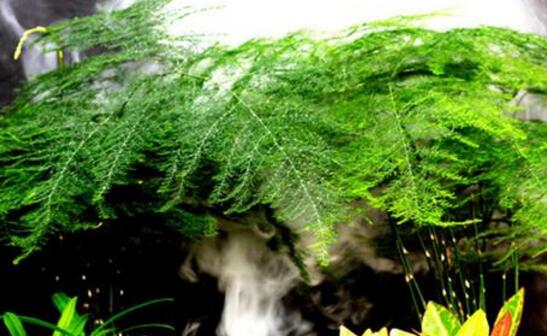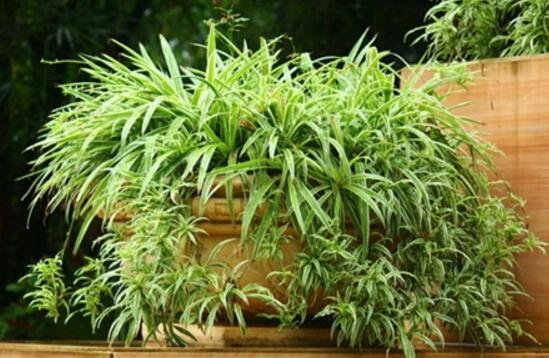What about fig worms? disease and pest control of figs / 1 pest 3 diseases
For plants, diseases and insect pests can be said to be their natural enemies, figs are no exception, if there are flowers of diseases and insect pests, it will lead to fig leaves yellowing and even withering, so we must pay attention to this problem. What about the fig worms? The following editor will introduce to you the pest control methods of figs.
1. What to do with fig worms

II. Disease and insect pest control of figs
1. Mulberry field cattle pest
Symptoms: in the prevention and control of fig diseases and insect pests, mulberry cattle is the most common pest, it mainly harms the branches and leaves of figs, it will gradually absorb the juice, resulting in fig nutrient deficiency, thus gradually withering.
Control method: when controlling the pest of mulberry field cattle, we can use Regent 2000 times solution to spray it.
two。 Rust disease
Symptoms: this disease mainly threatens the leaves and stems of figs, when the disease occurs, there will be many vesicles of different sizes on the leaves, which will gradually expand with the passage of the event, resulting in leaf shedding, rhizome death and other phenomena.
Prevention and control methods: when this disease occurs, it must be prevented and treated at the initial stage, and it will be difficult to cure it for a long time. To deal with this disease, we can use 150-200 times liquid high-fat membrane emulsion to spray the diseased plant, usually once every 7-12 days, and basically recover after 1-2 times.
3. Grey mold disease
Symptoms: Botrytis cinerea is a disease caused by fungi, which is relatively common in the prevention and control of fig diseases and insect pests. It mainly harms the fruit of figs. A gray-white mildew layer appears on the epidermis of figs when the disease occurs. With the passage of the event, the mildew layer will gradually spread to the whole plant, resulting in the decay of figs.
Control method: to deal with this disease, we can use 50% isobarbazide or 20% pyrimidine with water to spray the diseased plant, usually once every 10-15 days, and basically eliminate the disease after 2-3 times.
4. Powdered powder disease
Symptoms: powdery mildew this disease mainly threatens the leaves of figs, in the initial stage, there will be some white dust-like objects on the leaves, which will gradually cover the leaves, leading to premature senescence and shedding of the leaves.
Prevention and treatment: we can use 1000 to 1500 times of more than 10% antimycin in the prevention and treatment of this disease.
Third, the bird damage of figs
In addition to diseases and insect pests, some birds also do some harm to the fruit of figs. In dealing with this kind of bird damage, we can drive away this kind of fruit manually, but we can't be next to figs all the time. So the best way is when the fig fruit is about to ripen, we cover it with a bird net around it, so we can cover it once and for all.
What about the growth of Metasequoia glyptostroboides? pest control of Metasequoia glyptostroboides / 3 pests 1 disease
In the process of cultivating Metasequoia glyptostroboides, the last thing we want to encounter is the problem of diseases and insect pests, which do great harm to the plant, not only affect the beauty, but also cause death in serious cases. What about the metasequoia larvae? How to prevent and control diseases and insect pests of metasequoia? Next, the editor will take you to learn about it.
First, what about the metasequoia larvae? find the reason.
2. pest control of metasequoia glyptostroboides (pest)
1. Bark moth
This is an insect of the family Cerambycidae, which will eat into the stem of Metasequoia glyptostroboides during the larval stage, which will gradually lead to the death of its branches, resulting in its inability to blossom normally, and in serious cases, the whole plant will die.
Control method: when controlling the diseases and insect pests of this metasequoia, we can first prune the eaten branches, and then use 40% omethoate 100-200 times to spray the plant.
two。 Leaf wasp
This pest does great harm to Metasequoia glyptostroboides. It mainly feeds on the son of Metasequoia glyptostroboides and gradually eats its leaves until it runs out. Its magnets generally lay eggs on the branches, which will lead to the death of the branches.
Control methods: in the control of this metasequoia diseases and insect pests, we can adopt the most direct method, that is to directly use 1000-1500 times of fenitrothion EC to spray and kill it.
3. Leafhopper
Leafhopper, a pest that mainly threatens the leaves of Metasequoia glyptostroboides, will gradually absorb the sap in its leaves, resulting in massive loss of nutrients and withering. When this pest occurs on Metasequoia glyptostroboides, there will be many light spots on its leaves, which we can tell by this.
Control method: when controlling the diseases and insect pests of this metasequoia, we can use 1000 times of fenitrothion EC to spray the damaged plants, usually once every 5-7 days, and then completely eliminate this pest after 1-2 times.
III. Pest control of metasequoia glyptostroboides (diseases)
Rust disease
Rust is a disease that occurs in many plants, and Metasequoia glyptostroboides is no exception. this disease mainly threatens the leaves, stems and fruits of the plants. when the disease occurs, many blister spots will appear in the affected parts, and in severe cases, the blister spots will be dense and the plants will die quickly as a result.
Control method: in the prevention and control of this kind of metasequoia diseases and insect pests, we can use 20% verapamil EC 400 Mel 600 times liquid spray to spray metasequoia, usually about 15 days spray, 2-3 times can be cured.
What to do about the green onion orchid insect? disease and pest control of onion orchid / 2 insect pests and 3 diseases
Green onion orchid is a kind of high ornamental flower, which can be seen in many gardens in our country, but what this kind of ornamental fear most is the situation of diseases and insect pests, because this situation will lead to its wilting phenomenon. What about the green onion and orchid worms? How does the pest control of onion orchid need to do? Next, the editor will take you to learn about it.
What about the green onion and orchid worms
II. Pest control of onion orchid
1. Root line pest
Symptoms: root nematode is a kind of pest that occurs in many plants, and its reproduction is the fastest in summer every year, so special attention must be paid at this time. Root nematode, like its name, mainly harms the roots of onion orchids. It will gradually absorb nutrients from the roots of plants, resulting in the phenomenon of plant death, which is a very harmful pest.
Control methods: in dealing with this pest, we can use lactothiazophos high active B2 strain to treat onion orchid root irrigation, generally 5-7 days once, 1-2 times after the basic control.
two。 Night moth pest
Symptoms: in the prevention and control of diseases and insect pests of onion orchid, nocturnal moth is a common pest, which mainly harms the leaves of onion orchid. It will gradually erode the leaves, affect the beauty of the plant in the eyes, and even eat up the leaves of onion orchid in the later stage. So that the plant can not grow.
Control method: the high incidence period of this pest is from August to September every year, and special attention must be paid during this period. 2.5% trichlorfon powder can be used to spray onion orchid when controlling this pest.
3. Anthrax disease
Symptoms: anthracnose disease in the initial stage of the disease will appear many reddish-brown spots on the leaves of onion orchid, and with the passage of time will gradually expand, the spot volume will gradually become larger, and finally lead to the phenomenon of plant death.
Control methods: when this disease occurs, it must be dealt with in time, if the incident is prolonged, it will be difficult to cure the disease. To deal with this disease, we can use 40% seed dressing double wettable powder 200x 300 times solution to spray and control the plant.
4. Leaf blight disease
Symptoms: leaf blight is a disease with high incidence of disease and insect pest control of onion orchid. This disease mainly harms the leaves of onion orchid, and many reddish-brown spots will appear on the leaves at the time of disease. if not as soon as possible, it will cause the leaves of onion orchid to shrink and fall off gradually.
Control method: in the prevention and control of this disease, we can use 1000 times of methyl topiramate wettable powder to spray onion orchid, usually once every 10-15 days, and can be basically cured after 2-3 times.
5. Powdered powder disease
Symptoms: when powdery mildew occurs, there will be some white dust-like mildew layer on the leaves of onion orchid, which will seriously affect the photosynthesis of onion orchid, thus causing the leaves to wither and fall off ahead of time.
Prevention and treatment: the symptoms of this disease are very obvious, and we must deal with it as soon as possible when we find it. It will be difficult to cure the disease for a long time. In the treatment of this disease, we can use more than 10% antimycin 1000 to 1500 times to spray control.
- Prev

What to do when asparagus grows insects? disease and pest control of asparagus / not paying attention to fear of death of the whole plant
Asparagus insect or disease is a very troublesome thing, it will not only make the leaves yellow, but also may lead to the death of asparagus, so we must pay enough attention to it, so what should we do if it grows? Today, we will introduce several common pest control methods of asparagus.
- Next

What to do when the pest grows? pest control / prevention is very important.
Although the hanging orchid is good-looking and ornamental, what if the occurrence of diseases and insect pests not only affects the beauty, but also leads to the death of the hanging orchid? How should we deal with the disease? The editor gives you a detailed method of pest prevention and control of hanging orchids. What to do when the worm grows in the orchid? after research, it has been found that
Related
- Fuxing push coffee new agricultural production and marketing class: lack of small-scale processing plants
- Jujube rice field leisure farm deep ploughing Yilan for five years to create a space for organic food and play
- Nongyu Farm-A trial of organic papaya for brave women with advanced technology
- Four points for attention in the prevention and control of diseases and insect pests of edible fungi
- How to add nutrient solution to Edible Fungi
- Is there any good way to control edible fungus mites?
- Open Inoculation Technology of Edible Fungi
- Is there any clever way to use fertilizer for edible fungus in winter?
- What agents are used to kill the pathogens of edible fungi in the mushroom shed?
- Rapid drying of Edible Fungi

